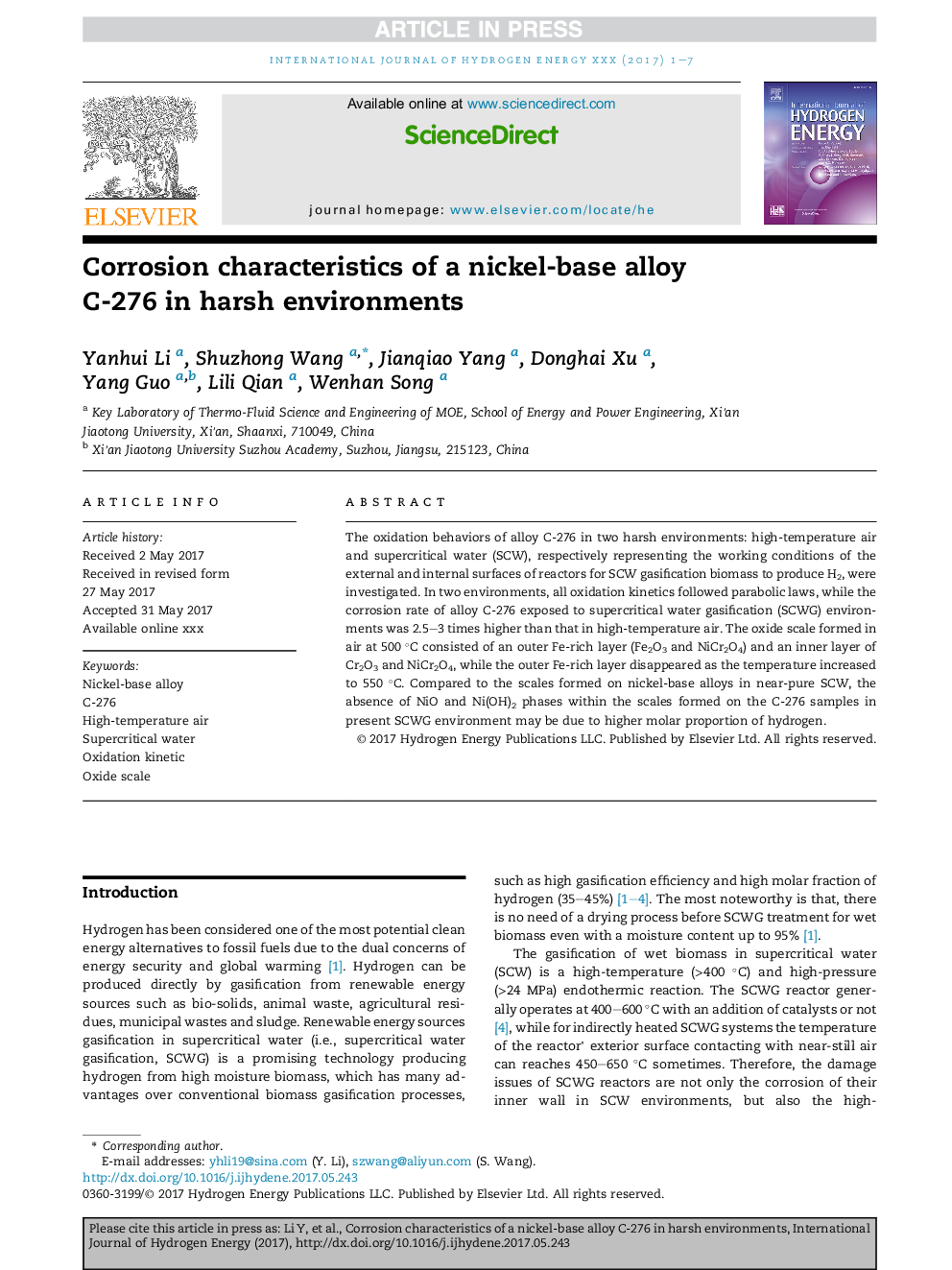| Article ID | Journal | Published Year | Pages | File Type |
|---|---|---|---|---|
| 5146619 | International Journal of Hydrogen Energy | 2017 | 7 Pages |
Abstract
The oxidation behaviors of alloy C-276 in two harsh environments: high-temperature air and supercritical water (SCW), respectively representing the working conditions of the external and internal surfaces of reactors for SCW gasification biomass to produce H2, were investigated. In two environments, all oxidation kinetics followed parabolic laws, while the corrosion rate of alloy C-276 exposed to supercritical water gasification (SCWG) environments was 2.5-3 times higher than that in high-temperature air. The oxide scale formed in air at 500 °C consisted of an outer Fe-rich layer (Fe2O3 and NiCr2O4) and an inner layer of Cr2O3 and NiCr2O4, while the outer Fe-rich layer disappeared as the temperature increased to 550 °C. Compared to the scales formed on nickel-base alloys in near-pure SCW, the absence of NiO and Ni(OH)2 phases within the scales formed on the C-276 samples in present SCWG environment may be due to higher molar proportion of hydrogen.
Related Topics
Physical Sciences and Engineering
Chemistry
Electrochemistry
Authors
Yanhui Li, Shuzhong Wang, Jianqiao Yang, Donghai Xu, Yang Guo, Lili Qian, Wenhan Song,
